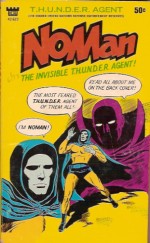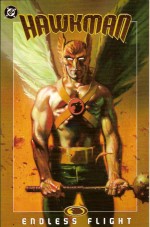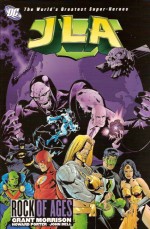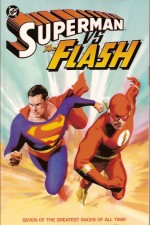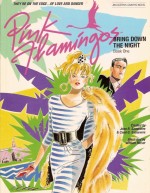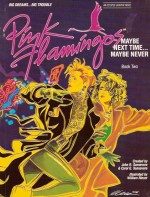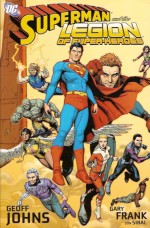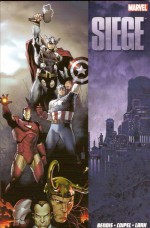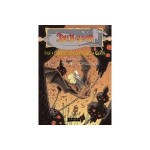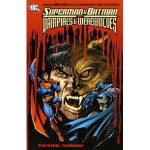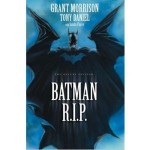
By Grant Morrison, Tony S. Daniel, Sandu Florea, Lee Garbett & Trevor Scott (DC Comics/Titan Books)
ISBN: 978-1-84856-137-3
After a sustained and vicious campaign of brutal psychological warfare, the all-encompassing criminal hegemony calling itself the Black Glove has succeeded in destabilising the already dubious mental equilibrium of Batman. The Glove’s enigmatic, quixotic leader Dr. Hurt is on the verge of his greatest triumph…
Grant Morrison’s controversial, much-touted extended saga relating “the Death of Batmanâ€, promised much and managed to leave many fans confused, angry and unsatisfied, but us older lags knew full well that whatever happened, however long it took, Bruce Wayne would be back and the dance would begin all over again. So let’s take a look at this culminatory saga on its isolated, intrinsic merits and not as part of the hysterical “Buy Me! Buy Me!†huckster-hype: a solitary book starring one of the industry’s most resilient stars.
I’m reviewing the rather lovely Deluxe British edition produced by Titan Books: a lavish oversized hardback that really feels like a special event and which collects the contents of Batman #676-683 plus the portentous prelude from DC Universe #0, and also includes an extensive cover gallery – including all the variants – and a sketch section by Morrison and artist Tony S. Daniel.
After the aforementioned prelude (by Morrison & Daniel), a confrontation and mutual warning for the Dark Knight and the Clown Prince, ‘Midnight in the House of Hurt’ (which begins Sandu Florea’s cracking contribution as inker) sees the villainous clan commence their end-game as distracted, exhausted, head-over-heels-in-love Batman is dragged through further tribulations. The criminal cabal invite the Joker to join their Black Glove, whilst in ‘Batman in the Underworld’ the hero’s greatest allies begin to suspect that he’s out of control: even Bruce Wayne is no longer sure…
The first inkling of a counterplan comes with a glimpse of Batman’s earliest cases – a time when the master strategist had time to plan for every possible contingency. With his closest confidante apparently dead a radical new Caped Crusader stalks Gotham – the outlandish Batman of ‘Zur En Arrh’. Death and Chaos rule on the streets in ‘Miracle on Crime Alley’ and the utterly unpredictable Clown makes his characteristically savage move in ‘The Thin White Duke of Death’…Naturally it’s not what anybody expected…
Let’s be clear here: at the time of the original comics publication, for the industry and fan-base the Death of Batman was already a done deal. With the mega-crossover event Final Crisis rumbling along like a gaudy juggernaut, everybody “knew†that Bruce Wayne was a goner and only waited to see how, so when ‘Hearts in Darkness’ finally appeared with a resplendent, resurgent, triumphant Batman vanquishing and vanishing, leaving a slew of unanswered questions, there were howls of protest.
However these are readers who were aware of a greater picture that involved the entire DCU. For the purposes of this collection though and any casual reader picking it up, there is a solid narrative conclusion which is marvelously supplemented by the two-issue postscript ‘Last Rites’ which follows.
Illustrated by Lee Garbett and Trevor Scott, ‘The Butler Did It‘ and ‘The Butler Did It Again’ focus on Alfred Pennyworth as he adapts to a life without Master Bruce and his driven alter-ego. Looking backwards and to the future these contemplative pieces pinpoint some key moments of Batman’s serried history whilst carefully planting those clues that would inform the adventures of his successor and even lay a trail of breadcrumbs that would lead to the return of Bruce Wayne…
With the addition of such fashionably despised elements as Bat-Mite and Black Casebook continuity (see Batman: the Black Casebook), as well as deferring/postponing the traditional last chapter explanation and wrap-up, Morrison caught a lot of flak for this tale, but in all honesty, with the value of distance and hindsight this whole thing actually works very well, indeed.
Pretty, enthralling beautiful and magnificently compulsive, this is a Bat-book well worth another look.
© 2008, 2009 DC Comics. All Rights Reserved.
Titan books, who published this edition, are responsible for a huge number of publications; their magazines and graphic novels range from British and World comics and strip classics to fantasy, science fiction, licensed product and DC/Vertigo material for all tastes. Their fabulous new website/blog should beopen for business as you read this. Why not check them out as soon as you’re done here?

